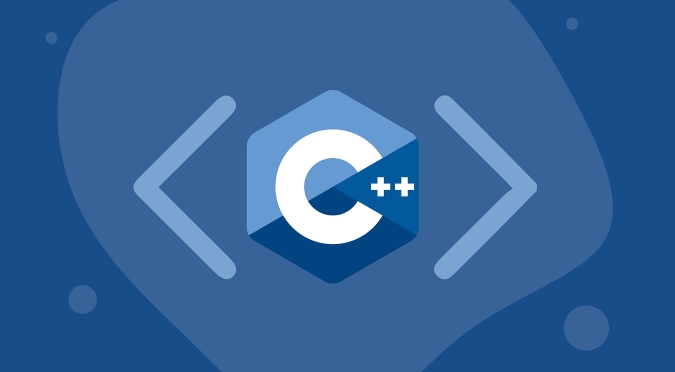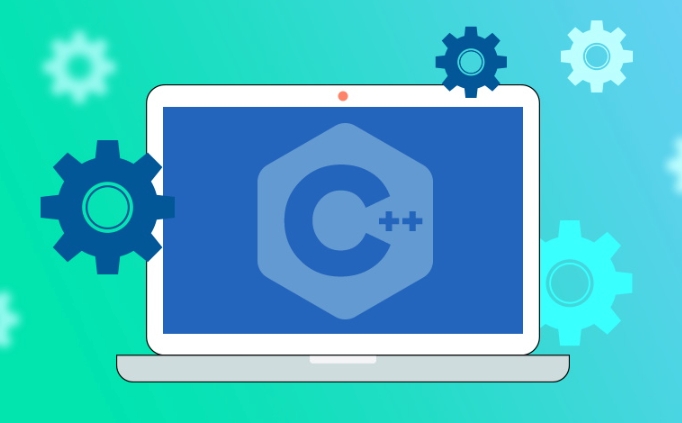The copy constructor is a special constructor in C used to create copy of an object. It takes a reference of the class type as a parameter and will be automatically called in scenarios such as initializing a new object, passing a parameter to a value, and returning a value. The default version performs shallow copy, and if the class contains pointers or resource management, deep copy needs to be manually implemented. Note when writing: 1. The parameters must be referenced to avoid recursion; 2. If the class contains dynamic resources, it should be implemented in a custom way; 3. The destructor and assignment operators need to be synchronized to follow the "three rules"; 4. Copying can be disabled through private declarations or =delete.

The copy constructor in C is part of the class and is used to create a new object as a copy of the existing object. Many people think that this thing is not used much when they first learn it, but in fact it is not the case - for example, when passing parameters, returning values, and initializing a new object, it may be automatically called. If you cannot write a copy constructor well, the program will cause errors at the least, and the resource will be leaked at the worst.

What is a copy constructor?
Simply put, a copy constructor is a special constructor whose parameters are references to the class type and are used to initialize a new object. If you don't write it yourself, the compiler will help you generate a default version.

For example:
class MyClass {
public:
MyClass(); // Normal constructor MyClass(const MyClass&); // Copy constructor};This function will be called in the following common scenarios:

- Initialize a new object with an existing object:
MyClass obj2 = obj1; - Pass the object into the function as a value:
func(obj); - The function returns the object as a value:
return obj;
Note that the default copy constructor makes "shallow copy", which means that if there are pointers or dynamically allocated resources in the class, there will be problems.
When do you need to write it yourself?
In most cases, when there is no complex data structure or resource management in your class, just use the default one. But if your class contains:
- Original pointer (such as
int*) - Open file handle
- External resources such as network connections
Then you must implement the copy constructor yourself, otherwise it is easy to cause multiple objects to share the same piece of memory, which will eventually lead to repeated releases, crashes and other errors.
For example:
class MyString {
char* data;
public:
MyString(const char* str) {
data = new char[strlen(str) 1];
strcpy(data, str);
}
MyString(const MyString& other) {
data = new char[strlen(other.data) 1];
strcpy(data, other.data);
}
};Here we manually copied the string content instead of directly letting the two objects point to the same address. This is what is called a "deep copy".
Several precautions for writing copy constructors
You must use reference to pass parameters , otherwise the copy constructor will be called when passed in, causing infinite recursion.
If you don't want others to copy your class object, you can declare the copy constructor as
privateor use C 11's= delete:MyClass(const MyClass&) = delete;
Don't forget to synchronize other resource management logics, such as destructors and assignment operators (operator=), which usually need to be processed together to avoid resource leakage. This is the so-called "Rule of Three".
Let's summarize
Although the copy constructor looks inconspicuous, it is called implicitly in many places. Writing well can make your class safer and more robust; if you don’t write well, just wait for debugging.
Basically all that is it. Remember to consider whether you really need a deep copy when writing it, and don’t miss the relevant assignment operators and destructors.
The above is the detailed content of C copy constructor tutorial. For more information, please follow other related articles on the PHP Chinese website!

Hot AI Tools

Undress AI Tool
Undress images for free

Undresser.AI Undress
AI-powered app for creating realistic nude photos

AI Clothes Remover
Online AI tool for removing clothes from photos.

Clothoff.io
AI clothes remover

Video Face Swap
Swap faces in any video effortlessly with our completely free AI face swap tool!

Hot Article

Hot Tools

Notepad++7.3.1
Easy-to-use and free code editor

SublimeText3 Chinese version
Chinese version, very easy to use

Zend Studio 13.0.1
Powerful PHP integrated development environment

Dreamweaver CS6
Visual web development tools

SublimeText3 Mac version
God-level code editing software (SublimeText3)

Hot Topics
 C tutorial for people who know Python
Jul 01, 2025 am 01:11 AM
C tutorial for people who know Python
Jul 01, 2025 am 01:11 AM
People who study Python transfer to C The most direct confusion is: Why can't you write like Python? Because C, although the syntax is more complex, provides underlying control capabilities and performance advantages. 1. In terms of syntax structure, C uses curly braces {} instead of indentation to organize code blocks, and variable types must be explicitly declared; 2. In terms of type system and memory management, C does not have an automatic garbage collection mechanism, and needs to manually manage memory and pay attention to releasing resources. RAII technology can assist resource management; 3. In functions and class definitions, C needs to explicitly access modifiers, constructors and destructors, and supports advanced functions such as operator overloading; 4. In terms of standard libraries, STL provides powerful containers and algorithms, but needs to adapt to generic programming ideas; 5
 What is the Standard Template Library (STL) in C ?
Jul 01, 2025 am 01:17 AM
What is the Standard Template Library (STL) in C ?
Jul 01, 2025 am 01:17 AM
C STL is a set of general template classes and functions, including core components such as containers, algorithms, and iterators. Containers such as vector, list, map, and set are used to store data. Vector supports random access, which is suitable for frequent reading; list insertion and deletion are efficient but accessed slowly; map and set are based on red and black trees, and automatic sorting is suitable for fast searches. Algorithms such as sort, find, copy, transform, and accumulate are commonly used to encapsulate them, and they act on the iterator range of the container. The iterator acts as a bridge connecting containers to algorithms, supporting traversal and accessing elements. Other components include function objects, adapters, allocators, which are used to customize logic, change behavior, and memory management. STL simplifies C
 How to use cin and cout for input/output in C ?
Jul 02, 2025 am 01:10 AM
How to use cin and cout for input/output in C ?
Jul 02, 2025 am 01:10 AM
In C, cin and cout are used for console input and output. 1. Use cout to read the input, pay attention to type matching problems, and stop encountering spaces; 3. Use getline(cin, str) when reading strings containing spaces; 4. When using cin and getline, you need to clean the remaining characters in the buffer; 5. When entering incorrectly, you need to call cin.clear() and cin.ignore() to deal with exception status. Master these key points and write stable console programs.
 What is inheritance in C ?
Jul 01, 2025 am 01:15 AM
What is inheritance in C ?
Jul 01, 2025 am 01:15 AM
InheritanceinC allowsaderivedclasstoinheritpropertiesandbehaviorsfromabaseclasstopromotecodereuseandreduceduplication.Forexample,classeslikeEnemyandPlayercaninheritsharedfunctionalitysuchashealthandmovementfromabaseCharacterclass.C supportssingle,m
 What is function hiding in C ?
Jul 05, 2025 am 01:44 AM
What is function hiding in C ?
Jul 05, 2025 am 01:44 AM
FunctionhidinginC occurswhenaderivedclassdefinesafunctionwiththesamenameasabaseclassfunction,makingthebaseversioninaccessiblethroughthederivedclass.Thishappenswhenthebasefunctionisn’tvirtualorsignaturesdon’tmatchforoverriding,andnousingdeclarationis
 How to get a stack trace in C ?
Jul 07, 2025 am 01:41 AM
How to get a stack trace in C ?
Jul 07, 2025 am 01:41 AM
There are mainly the following methods to obtain stack traces in C: 1. Use backtrace and backtrace_symbols functions on Linux platform. By including obtaining the call stack and printing symbol information, the -rdynamic parameter needs to be added when compiling; 2. Use CaptureStackBackTrace function on Windows platform, and you need to link DbgHelp.lib and rely on PDB file to parse the function name; 3. Use third-party libraries such as GoogleBreakpad or Boost.Stacktrace to cross-platform and simplify stack capture operations; 4. In exception handling, combine the above methods to automatically output stack information in catch blocks
 What is the volatile keyword in C ?
Jul 04, 2025 am 01:09 AM
What is the volatile keyword in C ?
Jul 04, 2025 am 01:09 AM
volatile tells the compiler that the value of the variable may change at any time, preventing the compiler from optimizing access. 1. Used for hardware registers, signal handlers, or shared variables between threads (but modern C recommends std::atomic). 2. Each access is directly read and write memory instead of cached to registers. 3. It does not provide atomicity or thread safety, and only ensures that the compiler does not optimize read and write. 4. Constantly, the two are sometimes used in combination to represent read-only but externally modifyable variables. 5. It cannot replace mutexes or atomic operations, and excessive use will affect performance.
 How to call Python from C ?
Jul 08, 2025 am 12:40 AM
How to call Python from C ?
Jul 08, 2025 am 12:40 AM
To call Python code in C, you must first initialize the interpreter, and then you can achieve interaction by executing strings, files, or calling specific functions. 1. Initialize the interpreter with Py_Initialize() and close it with Py_Finalize(); 2. Execute string code or PyRun_SimpleFile with PyRun_SimpleFile; 3. Import modules through PyImport_ImportModule, get the function through PyObject_GetAttrString, construct parameters of Py_BuildValue, call the function and process return






